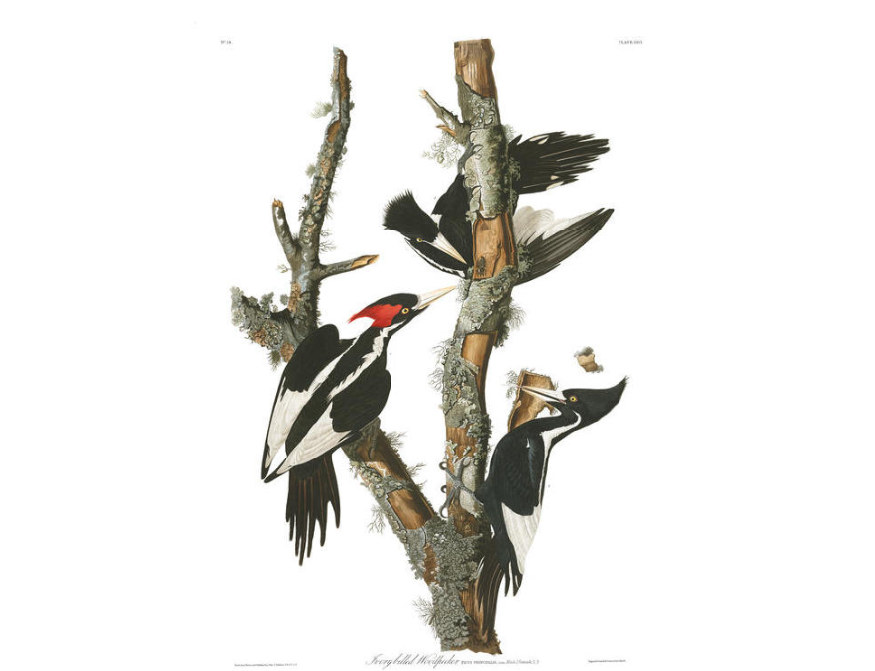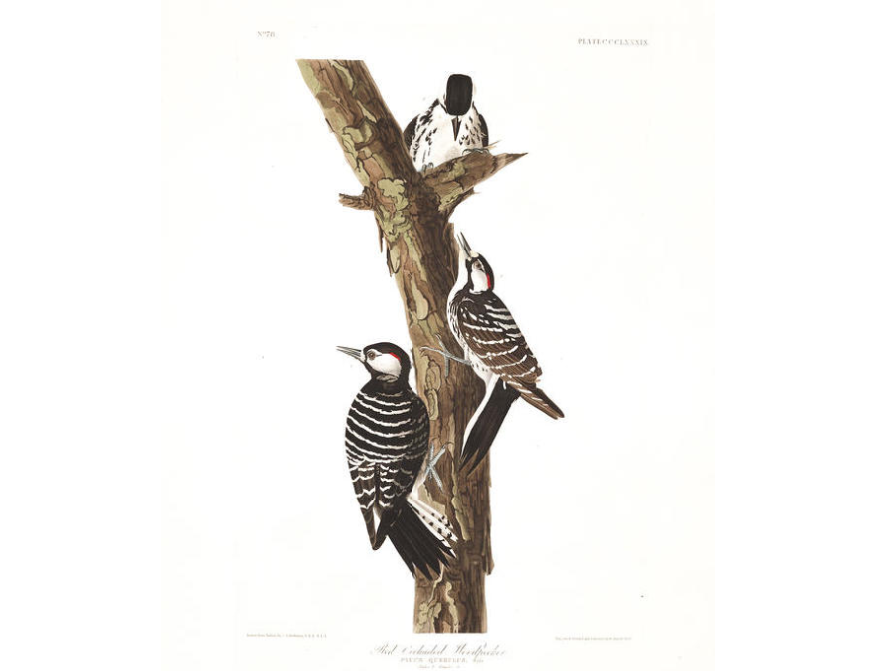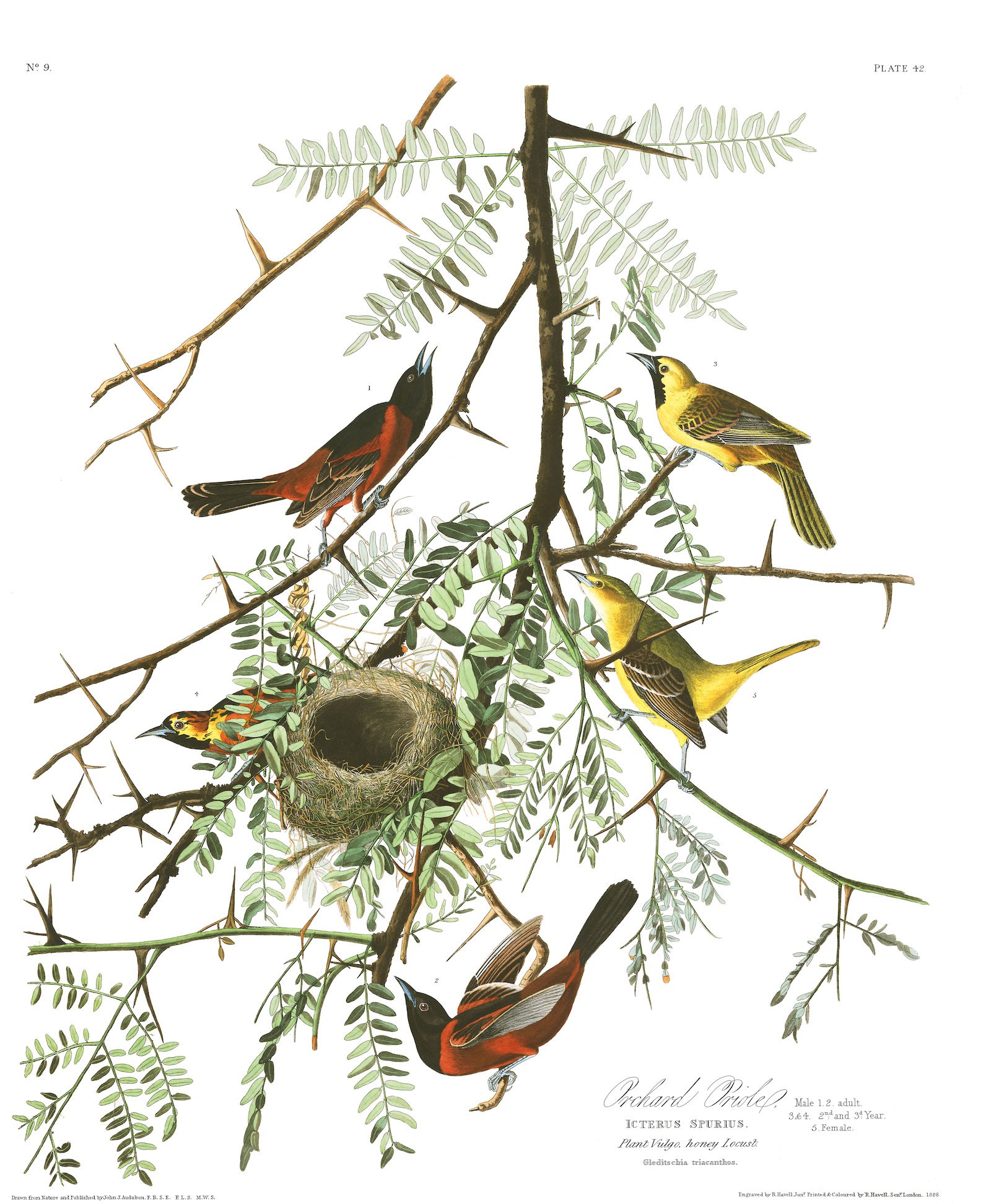 Learn More About Banner Slide 1
Learn More About Banner Slide 1
John James Audubon
Kate Benedict Hanna (Ireland) Harvey was the second Hanna family member to own Pebble Hill. Kate loved South Georgia, the beauty of the area, the flora and the fauna. Her interest in South Georgia wildlife led to her acquisition of 33 prints from the original edition of Audubon’s Birds of America. The Pebble Hill collection features birds that live in South Georgia or pass through on their yearly migration. Kate became Pebble Hill’s first major fine art collector.
John James Audubon (1785-1851), was born in Saint Dominguez (now Haiti). His sea captain father took John to France at an early age where he was raised by his stepmother. Audubon spent much time pursuing his major interests: birds, nature, drawing, and music. In 1803, at the age of 18, he was sent to America to escape conscription into Emperor Napoleon’s army and to run the family-owned estate at Mill Grove, near Philadelphia. There he hunted, studied, drew birds, met his wife, Lucy Bakewell, but eventually lost the farm.
Audubon did not focus on his epic quest to depict America’s avifauna until he was nearly 40. Floating down the Mississippi, from Cincinnati to New Orleans, he lived a rugged hand-to-mouth existence taking only his gun and art supplies. Often he was accompanied by a young assistant, Joseph Maso, who specialized in painting plants and insects. His wife, Lucy, worked as a tutor for the children of wealthy plantation owners to support the family.
Audubon spent much of his life drawing and observing birds in the field. He also shot specimens that he wired and propped into life-like positions as models for his paintings. His models did not last as long as stuffed birds used by others, but allowed for dynamic poses and close observation. In spite of the rugged conditions of his itinerate lifestyle, he chose to work on paper and employed a variety of media. His painting of the Pileated Woodpecker is typical and includes: watercolor, graphite, black ink, gouache, touches of pastel and black chalk with selective glazing on paper, laid on card.
By 1826 Audubon was ready to have his bird paintings reproduced in an elegant portfolio format that would be called The Birds of America. Failing to find subscribers in this country to support the publication, Audubon left for Liverpool seeking backers and hoping to engage a qualified engraver. He managed to find subscribers for many of the portfolios in the limited (2000 copies) 1st edition. The edition was published in 87 parts of 5 plates each. Each part contained an image of 1 large bird, 1 medium sized bird and 3 images containing smaller birds. When completed in June 1838, The Birds of America contained 435 hand-colored engravings of 1,065 birds of 489 species. Audubon traveled back and forth between the United States and England a number of times during the process, making corrections, supervising the printing, and looking for additional subscribers. To accompany The Birds of America, Audubon wrote 5 volumes from 1831 to 1839 under the title of American Ornithological Biography.
Enjoy Kate Harvey’s wonderful collection of first edition Audubon prints during your next visit to Pebble hill.
Audubons in the Pebble Hill Collection
Hand Colored Intaglio Prints
- Great American Hen and Young
- Mocking Bird
- Ground Dove
- Purple Martin
- Cardinal Grosbeak
- Chuck-Will's Widow
- Carolina Pigeon or Turtle Dove
- Night Herron or Qua Bird
- Rice Bunting
- Towee Bunting
- Loggerhead Shrike
- Orchard Oriole
- Pileated Woodpecker
- Ivory-billed Woodpecker
- Whip-poor-will
- Hooded Merganser
- Red-breasted Merganser
- Hooping Crane
- American Woodcock
- Fox-coloured Sparrow
- Florida Jay
- Barn Swallow
- Boat-tailed Grakle
- Wild Turkey
- Hutchin's Barnacle Goose
- Yellow-crowned Heron
- Summer or Wood Duck
- Pin-tailed Duck
- Double-crested Cormorant
- Black-bellied Darter
- American Widgeon
- Wilson's Plover
- Cedar Bird
For additional information about Audubon and his art, visit this site.
 Learn More About Banner Slide 1
Learn More About Banner Slide 1
